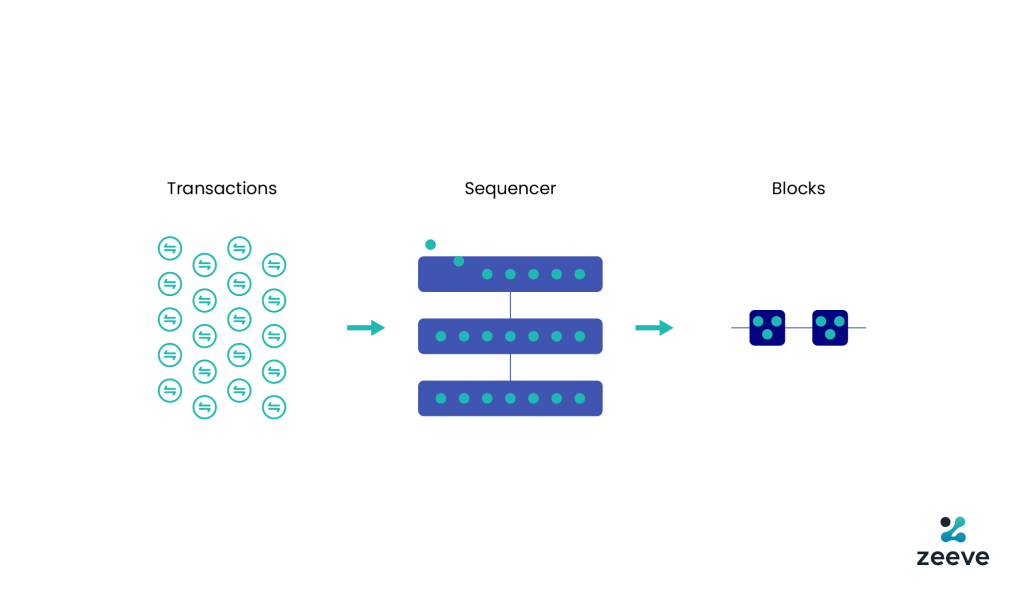
Sequencers are the air-traffic control (ATC) system of the L2 network; however, if the air-traffic control is not performing its duty in the right way, it could topple the entire airline industry. Likewise, sequencers need to perform their duties more efficiently; otherwise, the trust in using L2s for better UX will eventually fade and defeat the whole purpose of needing an L2 to scale Ethereum.
This concern has been rightfully acknowledged by the founder of Ethereum, Vitalik Buterin, who says that rollups and layer-2s that exist on Ethereum today basically have training wheels or some kind of backdoors letting developers come in and stop or change the protocol. As a result of this centralization, the essence of the rollups, which revolved around solving the trilemma challenge of blockchain, is slowly withering off because of centralized sequencers. The need of the hour is to decentralize Layer2 sequencers.

Why Will Layer 2 Willingly Decentralize Its Sequencers?
To understand why L2s will willingly decentralize their sequencers, we need to first look at the present state of the L2s with respect to centralized sequencers. In the present state of the rollups/L2s, there’s a single sequencer for every rollup chain that is directly receiving the orders from the users to sequence their transaction and putting them in the block for validation from the L1 chain in the following manner;

This process is undoubtedly very effective from a user’s standpoint because users pay lower gas fees and enjoy faster finality. However, there’s a price users have to pay to use a single sequencer for rollups. What price, if one may ask, is the price of centralization that Vitalik Buterin has admitted time and again!
As a result, the rollup environment is vulnerable to SPOFs or Single Points of Failure, where if the single sequencer fails to operate and goes offline, the Layer 2 chain halts. On the Arbitrium Rollup chain, such an event occurred in December 2023, when the sequencer went offline for 78 minutes and brought the network to a standstill. Though Arbitrium One is the only rollup chain that can tackle network non-liveness, it takes almost a week to restore normalcy, which still needs to be feasible to host a complete global financial system on top of it. Hence, such events can lead to lost opportunities for users and loss of trust in decentralized technology. For example, if a favorable trade option was available during such a time, the user will lose that opportunity because there’s only a single sequencer set managing the whole network ecosystem that has gone offline suddenly. Thereby discouraging them from using rollup environments with centralized sequencers in the near future.
Furthermore, a single centralized sequencer set also exposes other vulnerabilities like transaction censorship and monopoly over MEVs through front and back-running and sandwich attacks and lack of cross-rollup composability, which we have already seen on multiple rollup chains. However, such a scenario changes when a decentralized sequencer enters the space.
How do decentralized sequencers change the game?
A decentralized sequencer brings a network of nodes that will be given the task of sequencing the transactions for a larger rollup chain. Since there will be random selection among a large network of nodes to sequence transactions for all the connected rollup chains based on consensus, it dramatically resolves the problem of centralization of the rollup chain and eliminates attacks in the form of SPOFs, MEVs, and censorship of transactions on the roll-up chain in the following manner, as explained below:

As you can see above, the transactions are recorded on the mempool by the user encrypting the transaction and putting it for execution through a PVDE function. The sequencers will be given a keyshare that they will be using to decrypt the transaction to execute the transaction in the order they come up, and the PVDE will assess that they are sequencing the transactions based on a time-lock hash algorithm. Since the entire process is done in a round-robin manner, there’s no point in any opportunity for a single sequencer to use in any way to benefit themselves, like reorganizing transactions, denial of services, or censorship.
Moreover, the use of a consensus mechanism would ideally evoke decentralization while proposing and sequencing the transactions on the layer2 rollup chain because all the sequencing will be subsequently signed and proposed to the network via consensus for execution into a block for validation via L1 chains by all the participating sequencer nodes.
Another advantage of a decentralized sequencer set is that the transaction can be validated using the sequencer across different rollup environments.
In this way, the rollup operators can also pursue decentralized sequencing economically because all the rollup sequencer/ validator networks will actively play a complementary role in keeping the entire rollup ecosystem functional, cost-effective, and secure from a 360-degree standpoint.
How Is a Feasible Decentralized Sequencer for Layer 2?
When we are speaking about decentralized sequencer for layer2, at one end of the spectrum, we have to duly acknowledge the fact that not all blockchains/rollup chains are synchronous. As a result, if Layer 2s intends to use a decentralized sequencer in the first place, they will have to address the problem of blockchain synchronicity through some noble means.
It could either be through a DVT or a Distributed Validator Technology in which every private validator/sequencer key for its own rollup chain is broken and stored in the Distributed Validator Cluster, and the keys representing the distributed cluster will be jointly used to sign the transaction to validate the blocks or a shared sequencing layer for all the rollup to validate/sequence transactions on their chains. Such a practice can streamline better coordination among all the sequencers of the rollup chains to streamline the decentralization of sequencers.
At the moment, some of the blockchain protocols have engineered this approach, standardizing the language across different rollup ecosystems to provide middleware support so that all the rollup environments can dynamically communicate and establish decentralized sequencing.
